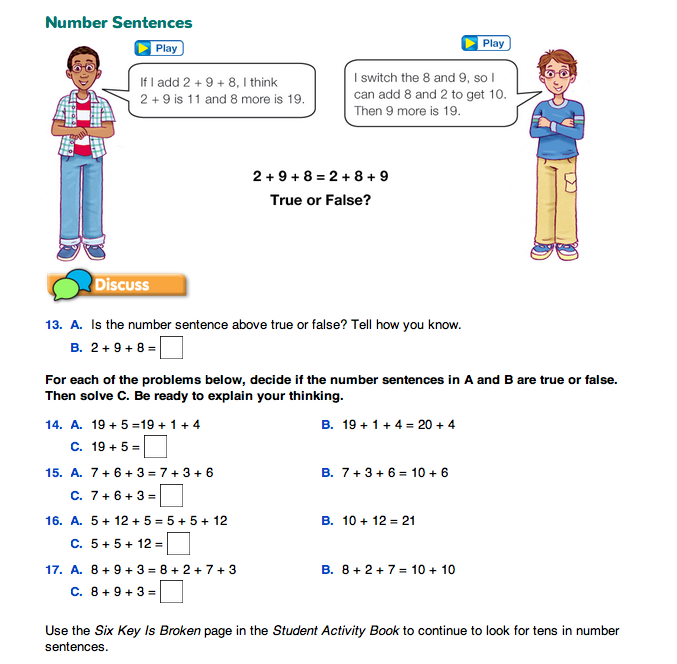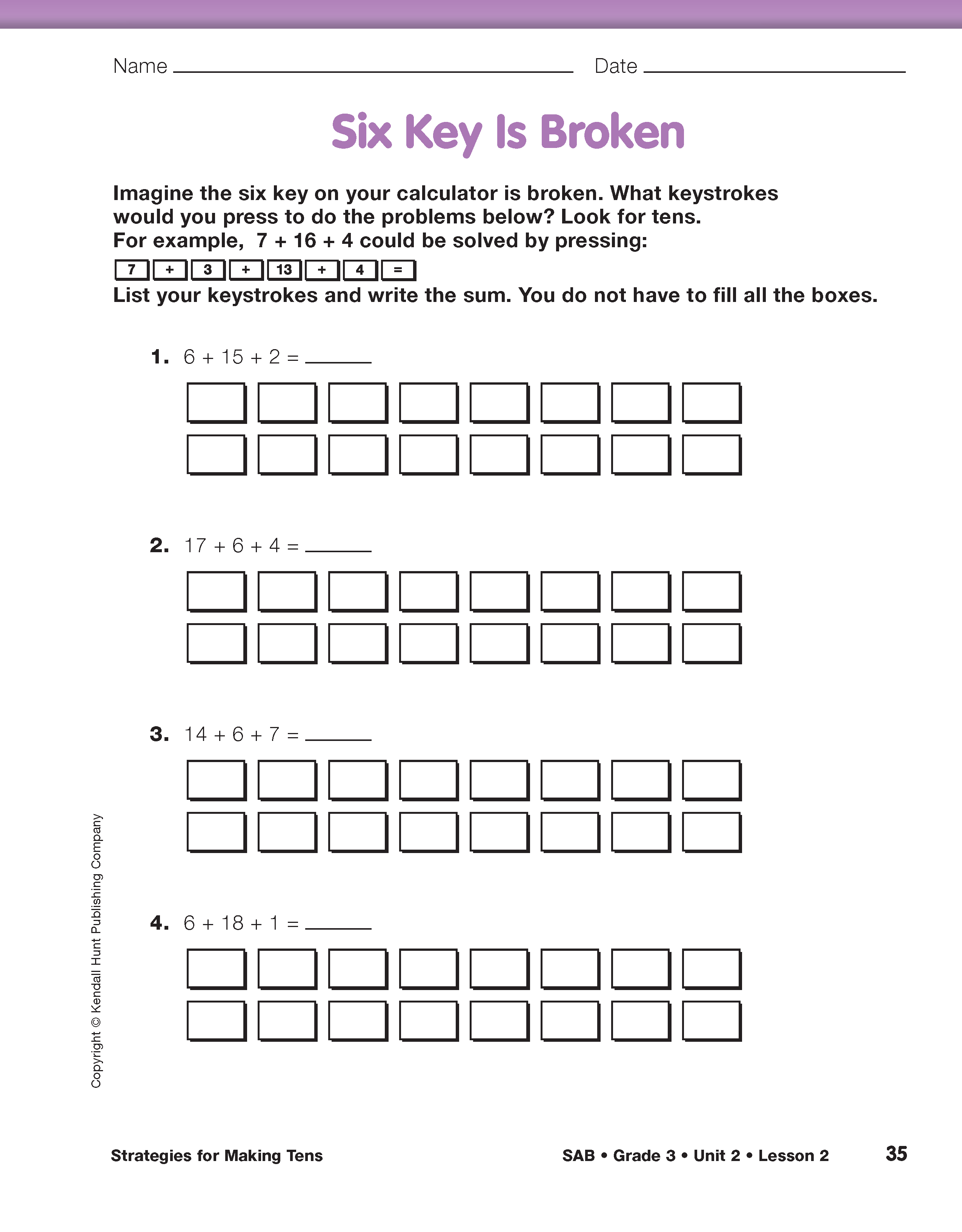Find True Number Sentences. Direct students' attention to the conversation between the two boys in the Number Sentences section of the Student Guide.
Then discuss Question 13 that asks:
- Is the number sentence 2 + 9 + 8 = 2 + 8 + 9 true or false? Tell how you know.
Switching the order of 9 and 8 does not change the sum on each side, so the number sentence is true. Students can check this by using the reasoning described by the boys in the Student Guide. You can show the boys' thinking as follows:
At any point during the lesson students struggling with the strategies involving mentally making a ten can continue using connecting cubes to practice the process.
Some students may be ready for a further challenge. The following number sentences can be used to extend thinking by challenging students to group three or more addends to make a group of ten:
3 + 4 + 5 + 3
2 + 5 + 6 + 2 + 1
17 + 5 + 2 + 1
Assign Questions 14–17 in the Student Guide. They are sets of related number sentences labeled A, B, and C. Students can use the strategies they used in Parts 1 and 2 of the lesson to decide whether the number sentences in A and B of each question are true or false. Then they can use A and B to solve C. As students work on the questions in pairs or groups, talk with them using prompts similar to those in the Sample Dialog.

Teacher: Frank, what did you and Jerome think? Is the number sentence in A true or false? How do you know? [Teacher points to the number sentence: 19 + 5 = 19 + 1 + 4.]
Frank: It is false. There can't be two numbers on one side and three on the other. You have to add 19 and 5 and that equals one number.
Teacher: Does your partner agree with you?
Frank: No, Jerome thought something else. He wanted to split five or something. I didn't understand exactly.
Jerome: I said that 19 + 5 is the same as 19 + 1 + 4 because you can split 5 into 1 and 4. [Jerome circles the 5 and then he circles 1 + 4.] They are the same, so the number sentence is true.
Teacher: Remember, a number sentence is true if both sides represent the same number. Jerome just split one of the numbers apart. Make a train of cubes for both sides and let's see.
Jerome: [The boys work together to make a train that represents both sides.] See, both trains are 24 cubes long. We used two colors for this side and three colors for the other side.
Teacher: Okay, Frank, can you use the cubes to tell me if the number sentence in B is true or false? [Writes 19 + 1 + 4 = 20 + 4.]
Frank: This side is the same as the train with three colors. [He thinks for a minute.] They will be the same. I just have to add the 1 to the 19 to make 20.
Teacher: Now, can you fill in the missing number in C? [Points to 19 + 5 =  .]
.]
Jerome: Now it's easy. It's 24. It's the same as 19 + 1 + 4, and that is the same as 20 + 4 and that's just 24.
My Calculator Is Broken! In this part, students partition addends using calculators.
- Today, we are going to imagine that some of the keys on the calculator are broken. That means that you cannot use those keys. First, let's imagine the five key is broken. What keys would you press to do the problem 9 + 5 + 2?
There are a number of ways to key this problem without using the five key. Encourage students to partition five so that a group of ten can be formed. For example, students might enter the following keystrokes:
Some students might skip a step on the calculator and press:
Ask students to solve additional problems that include addends such as 5, 15, or 25. For example:
8 + 5
5 + 7 + 6
15 + 6 + 3
9 + 25
Encourage students to predict the calculator's answer before they key it into the calculator. Ask students to list their keystrokes as they work. Ask small groups to compare their different key stroke sequences.
Assign the Six Key Is Broken page in the Student Activity Book.


















